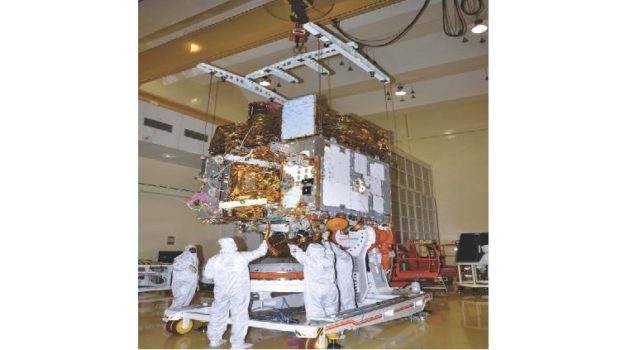
India’s multi-wavelength satellite AstroSat makes rare discovery: IUCAA
PTI, Aug 25, 2020, 12:32 PM IST

Pune: AstroSat, India’s first multi-wavelength satellite, has detected an extreme ultraviolet (UV) light from a galaxy which is 9.3 billion light-years away from Earth, the Inter-University Centre for Astronomy and Astrophysics (IUCAA) said on Monday.
A release from the Pune-based Inter-University Centre for Astronomy and Astrophysics said a global team led by IUCAA scientists have achieved the major breakthrough.
“India’s first multi-wavelength satellite, which has five unique X-ray and ultraviolet telescopes working in tandem, AstroSat, has detected extreme-UV light from a galaxy, called AUDFs01, 9.3 billion lightyears away from Earth,” said it said.
The discovery was made by an international team of astronomers led by Dr Kanak Saha, associate professor of astronomy at the IUCAA, and published on August 24 by ‘Nature Astronomy’, the release said.
This team comprised scientists from India, France, Switzerland, the USA, Japan and The Netherlands.
Saha and his team observed the galaxy, which is located in the Hubble Extreme Deep field, through AstroSat. These observations lasted for more than 28 hours in October 2016, the release stated.
But it took nearly two years since then to carefully analyse the data to ascertain that the emission is indeed from the galaxy. Since UV radiation is absorbed by the Earth’s atmosphere, it has to be observed from space, it said.
Earlier, NASA’s Hubble Space Telescope (HST), a significantly larger than UVIT (UV imaging telescope), did not detect any UV emission (with energy greater than 13.6 eV) from this galaxy because it is too faint, it said.
AstroSat/UVIT was able to achieve this unique feat because the background noise in the UVIT detector is much less than the ones on HST,” said the release quoting Saha.
Saha said they knew it would be an uphill task to convince the international community that UVIT has recorded extreme-UV emission from this galaxy when more powerful HST has not.
Dr Somak Raychaudhury, Director of IUCAA, said, “This is a very important clue to how the dark ages of the universe ended and there was light in the universe. We need to know when this started, but it has been very hard to find the earliest sources of light. I am very proud that my colleagues have made such an important discovery.”
Udayavani is now on Telegram. Click here to join our channel and stay updated with the latest news.
Top News

Related Articles More

CM Vijayan opens Huddle Global; Says Kerala will be key player in India’s deep tech ambitions

Over 1,80,000 cases disposed off by exclusive POCSO courts: WCD

Blast near PVR in Delhi’s Prashant Vihar, 1 injured

ECI must clarify how voter turnout rose by over 7 per cent after polling ended: Patole

Indian culture resonates globally: PM Modi
MUST WATCH
Latest Additions

CM Vijayan opens Huddle Global; Says Kerala will be key player in India’s deep tech ambitions

Bengaluru to host Aero India 2025 from Feb 10-14

Karnataka cabinet decides to reopen graft case against Ex-CM Yediyurappa and family

Man attacks nurse inside hospital, caught on camera

Special tribute concert for legendary singer SPB to be held in Bengaluru on Dec 8
Thanks for visiting Udayavani
You seem to have an Ad Blocker on.
To continue reading, please turn it off or whitelist Udayavani.

















